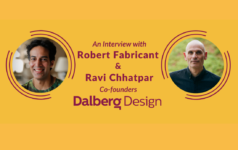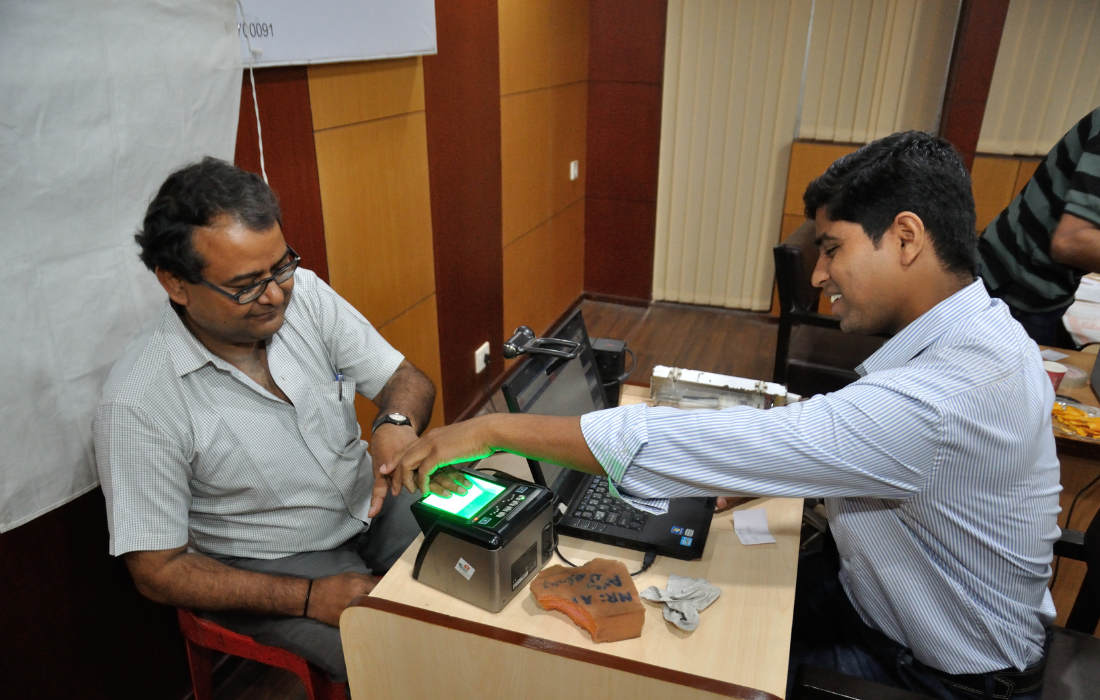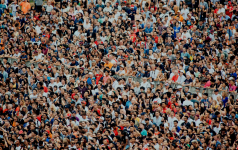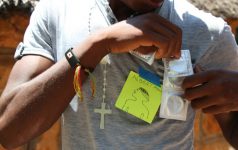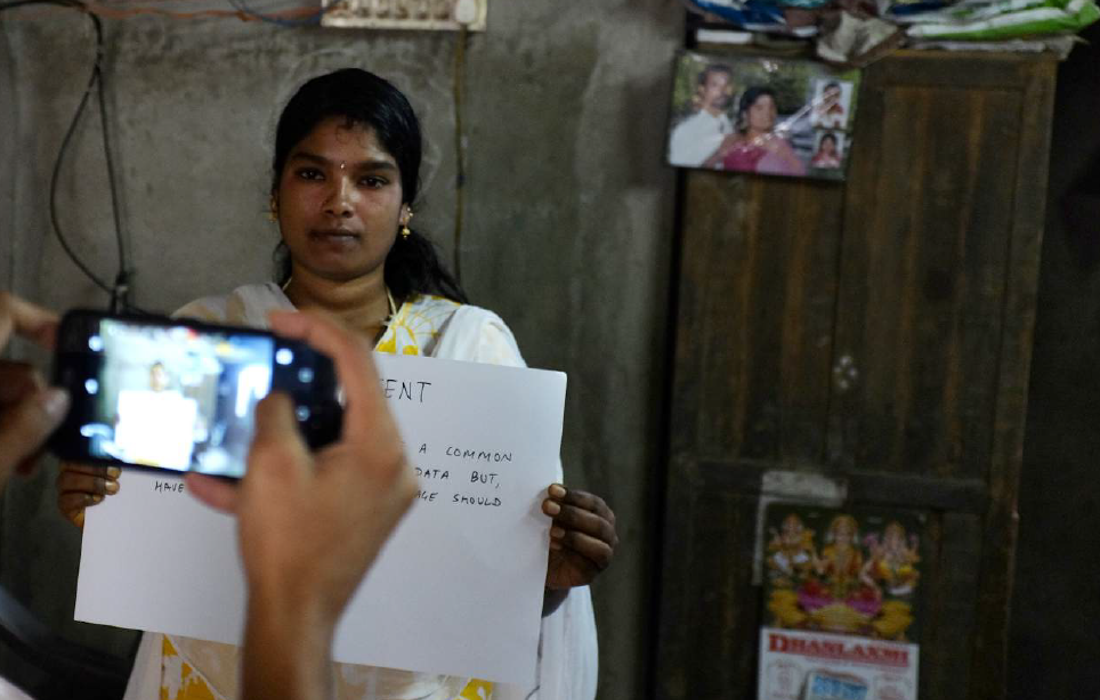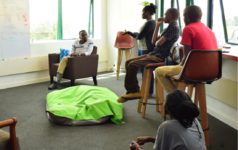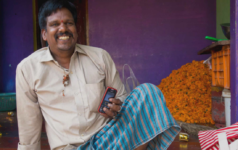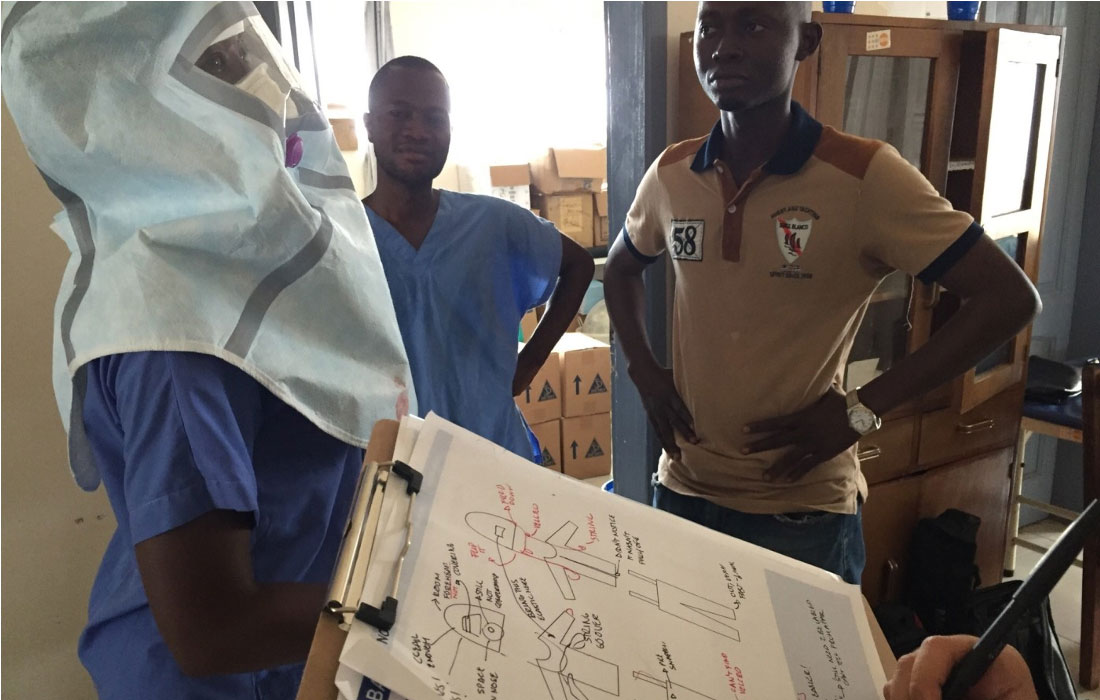Robert Fabricant and Ravi Chhatpar co-founded Dalberg Design five years ago. After a long history of working together at global innovation firm frog design, the pair were eager to focus more on the social impact sector, HCD, and mesh their skills with an organization with the scope, expertise and mission that Dalberg could offer. Mission-driven businesses must adopt design thinking for social innovation if they want to meaningfully contribute solutions to global challenges. Human-centered design thinking is the best way to develop products people will value and is now being looked at as a promising approach to create social impact. Five years on, Dalberg Design is a World-Changing Company of the Year finalist in the Fast Company Awards – a marker, Robert says, of the fact that the firm now has “a very credible portfolio.”
We spoke to Robert and Ravi about the impact of the awards; why they joined forces with Dalberg, and why they’re so enthusiastic about how human-centered design can meet the needs of the world’s most underserved citizens.
What is the significance of the Fast Company Awards?
Robert Fabricant (RF): “Fast Company has always seen design as playing a critical role in driving business innovation. Alongside their Innovation by Design Awards are the World -Changing Idea Awards, which focus on social impact. The fact that these two sit side-by-side is, for them, an appreciation that some of the most innovative ideas these days do not necessarily come from pure private sector business or market-driven efforts. I think they launched [the World Changing Ideas awards] understanding that many of their readers wanted to hear about how design thinking and innovation can fuel positive social impact in the world. So, it balances out the tech-driven stuff that they usually recognize.
“There are a lot of really talented designers and technologists who are rethinking where and how they should apply their thinking and skills. One of the primary reasons that Ravi and I joined Dalberg was because we recognized all the creative capacity we could unlock around the world. [Look at the] skills and capabilities that we have in the amazing Dalberg staff, the communities, and the organizations we partner with . Part of our goal on each project is to find new ways to tap into that capacity to drive social change. That mission extends beyond our project work, to the founding of the Nairobi Design Institute, for example, or our support for Nairobi Design Institute, for example, or our support for UNLEASH – a global innovation lab, where 1,000 people a year come together to work on advancing the UN Sustainable Development Goals.”
Dalberg has also received honorable mention for three projects that you have worked on – The Human Account: Tech Bets for an Urban World, and Design for Health. What does this recognition mean for the firm?
RF: “We feel like finally, at the five-year point, we have a very credible portfolio in place. Last year, Fast Company recognized DigiFarm, a million-plus user platform to help smallholder farmers in East Africa that we designed and developed in collaboration with MercyCorps and Safaricom. But with The Human Account, for example, we’re not launching a product or a service; we are creating a set of global insights – market by market, segment by segment – that could be transformative to financial service providers, governments, and other stakeholders. We have shown how this unique data set illustrates the needs of millions of people, and the huge opportunity we have to design products and services that better meet their needs. Design thinking is an incredibly unique resource and a compelling way to shift the conversation and empower many other actors in this space, particularly when it is supported by robust behavioral and psychometric data.
“The breadth of our work demonstrates what Dalberg can achieve as an organization. It also reflects a certain pride in some of the different things we’ve been able to accomplish by adding a small, agile design team into the mix. I am particularly excited by the diversity of the kind of work that Fast Company has chosen to recognize. In the past, they would only be interested in something like DigiFarm, because there’s a robust private sector and digital product angle. But what our design team learned is that the capacity-building piece is equally important to the success of a service like DigiFarm as the user research and UX design.
Our portfolio maps out the breadth of the space from capacity-building (with Design f or Health) to insights, products and services, to business models (with Urban Tech Bets) where we can bring design thinking for social innovation and demonstrate its value as a strategic process that starts early. Design is not a set of capabilities that comes ‘after’ we figure out the strategy. Rather, the convergence of skills and expertise we now have within the firm are absolutely necessary to unlock the potential of the communities we are trying to serve better.”
Why did you establish Dalberg Design?
Ravi Chhatpar (RC): “If you believe in achieving impact, we must have the humility to say that design can’t solve all the problems that we’d like. Having the ability to bring in financing, stitch together partnerships, think about policies, think about measurement and evaluation, and how you assess real impact – they are the disciplines that we knew little about before joining the firm; that the design world has only dabbled in. Organizations like Dalberg have a lot of expertise and knowledge that we couldn’t find anywhere else. Being able to tap into all of those other disciplines, we thought, would be a game-changer.”
RF: “For us, another big part of the reason to join Dalberg was to get out of the bubble. We didn’t want to start in San Francisco and try to figure this sort of design practice , and then slowly grow from there. Establishing a Nairobi presence in our second year; establishing a Mumbai presence soon after… building out a team, the majority of whom are not in the US, that’s all been a part of making sure that we feel like we’re staying true to the integrity of the work and continuing to test out the potential of design thinking in new contexts.
“It’s important to not jump quickly to what you think are the right solutions, or what your instincts tell you is the right hypothesis. B ut to go to people and see how solutions can fit in with and shape their lives to create positive social impact. That’s one of the reasons that this collaboration with Dalberg has worked so well. As much as our colleagues have a powerful set of tools, they know that the data they’re building off, the analysis and expertise they can tap, often reveal many gaps in understanding, particularly around user behavior. Our work at Dalberg is very much about how we bring those human-centered design thinking capabilities together to understand and address problems from a variety of angles.”
What’s so special about Dalberg?
RC: “We knew about Dalberg for a while and admired the real commitment to diversity that Dalberg has. It’s not all about a western-educated, elite school – Harvard, Oxford-bred management consultants. There’s a real effort to accommodate a diversity of perspectives and experience: Dalberg has 15 offices in Africa, and most of those offices are full of fantastic, local talent. There’s a lot of investment in growing that team and building their capabilities. Creating interdisciplinary and diverse design teams is hard to do. But when you get it right, it is truly magical. It’s something that I deeply believe in – that diversity breeds the best form of creativity. We saw that as a similar value in Dalberg, and it was so core to how we wanted to build our design team here from the ground up (and not with transplants from frog design or IDEO).”
What is exciting about bringing human-centered design to the social impact space?
RF: “One of the things that has been such a natural part of the collaborations we do across the firm is that we start by looking at the challenge, the issue, and the need. We recogniz e that that context can tell us so much more about how to potentially empower people, how to find different pathways for change and social impact together with the people we are trying to support. But often, they don’t have a voice or a seat at the table.”
RC: “At frog, at a certain point, I asked myself, what we’re being paid to do, and paid a lot of money to do, and a lot of money to have teams of some of the truly best designers in the world do, is to try to convince you that the expensive smartphone you bought six months ago isn’t good enough anymore: you need to get the newer version with the latest camera. Most of the work tried to help clients find that edge that gives you six months of advantage over your competitors. It feels like a rat race, and companies are spending millions of dollars on the best design talent in the world for this purpose – whether that’s Barclays (which employs more designers in the UK than any other company) or Samsung, with one of the largest, design forces in the world.
“I remember when I first moved to China and then started working in Indonesia and Vietnam., I’m visiting villages, and I’m walking through the rice paddies and you see a farmer using a simple mobile phone service – a small thing that provides basic information on where to sell their produce for higher prices. A design like that might take 5% of my creative thinking but would make a stark difference. You just start asking yourself, where should the design capacity of the world be directing its energy? The reason for this work comes out of a real belief that the world needs it, and not enough people are doing it.”
What’s next for Dalberg Design?
RC: “There’s so much need. It’s great that in a company like Dalberg, we’re working in places like Kenya, Rwanda, Tanzania, and South Africa, but who’s doing the work in the Central African Republic? Who’s doing the work in Somalia? The list of countries and the need for design thinking is just too big to fathom. While we’re proud to have four Dalberg Design locations, I think from a pure geography perspective, we a re not as representative as we want to be. For example, Latin America is an obvious gap though we are starting to do a lot of work and recently added a fantastic Colombian designer to our team. But we would like to have a formal presence there. It would also be wonderful to have a Francophone design team in Dakar (which Dalberg Design went on to establish in 2020).
“The human-centered design toolkit is continuously evolving, and I think The Human Account work, for example, really helped us understand how valuable behavioral science and behavioral design can be. Historically, that’s always been its discipline, and we’re interested to see how we can bring it into the fold. We have two behavioral scientists who have now joined our design team in Nairobi and Mumbai. The intersection between behavioral science and human-centered design is an emerging field where I think there’s a lot of potential.
“There are many sectors that we would love to do more work in – from the domestic markets in the US and Europe to working in mental health, as we have done this year with CitiesRise, an initiative of GDI, another Dalberg offshoot. And while we’ve worked in agriculture and environmental sustainability, climate change is such a massive topic, and there is a lot more to do there. So, we’re continuing to expand the footprint of places where we can experiment with design thinking for social innovation.
“When we started Dalberg Design, we felt there were real opportunities for HCD to create impact that we could bring as part of a truly global, interdisciplinary team. Looking at what we’ve already achieved, it’s exciting to see where the next five years will take us; and how the evolution of design can continue to support solutions for the world’s greatest challenges.”
Difference between design thinking and human centered design for business vs for social impact
| Human Centered Design for Business | Human Centered Design for Social Impact |
| Identify unmet needs in the market and create products and services that address those needs | Engage communities in a participatory process so that they can shape solutions that suit their lived experience |
| Focus on an individual sector or product category that matches with a business objective | Look holistically at the barriers and challenges people face before identifying a specific need to focus on |
| Create solutions that a single business or organization can deliver | Explore solutions at the intersection of business and society that often sit outside the purview of a single organization or institution |
| Look to market competitors for inspiration | Look to people’s adaptations and resourcefull-ness for inspiration |
| Design Thinking for Business | Design Thinking for Social Impact |
| Start with business objectives and ROI and explore opportunities that converge with human value | Start with social impact and human value and explore opportunities that converge with the objectives of business, government and other stakeholders |
| Use creative, collaborative methods to break down silos within a single organization or business | Use creative, collaborative methods to find common ground and identify new opportunity spaces that sit across public and private sector institutions |
| Invest in building agile, creative capabilities within an organizational context | Invest in building agile, creative capabilities within a community context |
| Results in proprietary design offerings that provide a sustainable competitive advantage | Results in new design models for achieving social impact that are shared openly to be sustainable |
Frequently Asked Questions (FAQ)
Can we use design thinking for social change?
Yes, design thinking is very well-suited to drive social change. Design thinking is an effective way to ensure that people and their needs are placed at the center of social programs and policies, and not just products and services. But designers must learn how to translate their design thinking methods so that they are relevant to decision-makers in government, foundations and the nonprofit sector.
What is design thinking for social change?
Designing for social change is a process where you leverage creative approaches to overcome the barriers and challenges that limit opportunity for people and disempower under-resourced communities. But designers must see themselves as facilitating a process that will enable communities to generate solutions rather than showing up with the big ideas themselves.
What are the 5 stages of design thinking?
The five stages of Design Thinking are:
- Stage 1: Discover — Meet your users where they are to build trust
- Stage 2: Identify—Collaboratively identify common needs and challenges
- Stage 3: Imagine—Reimagine how local capabilities and resources can be leveraged to shift existing dynamics and overcome constraints
- Stage 4: Iterate—Collaboratively generate solutions to test and iterate together, gathering feedback and measuring impact
- Stage 5: Sustain—Transfer capability and ownership to local communities and institutions
4. Why is design thinking a good approach to social problems?
Conventional scientific approach to problem solving relies on analyzing a clearly defined problem and addressing it. This works well in a business context where problems generally have a clear owner, and your analysis can be informed by robust data. Social problems, however, are poorly defined and often straddle many different actors and stakeholders within an ecosystem. Design thinking leverages a participatory approach that is ideally suited to identifying problems collaboratively with a wide range of diverse stakeholders. And design embraces an iterative approach to testing and learning that is much more adaptive and resilient to the evolving dynamics of social problems.


